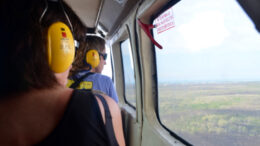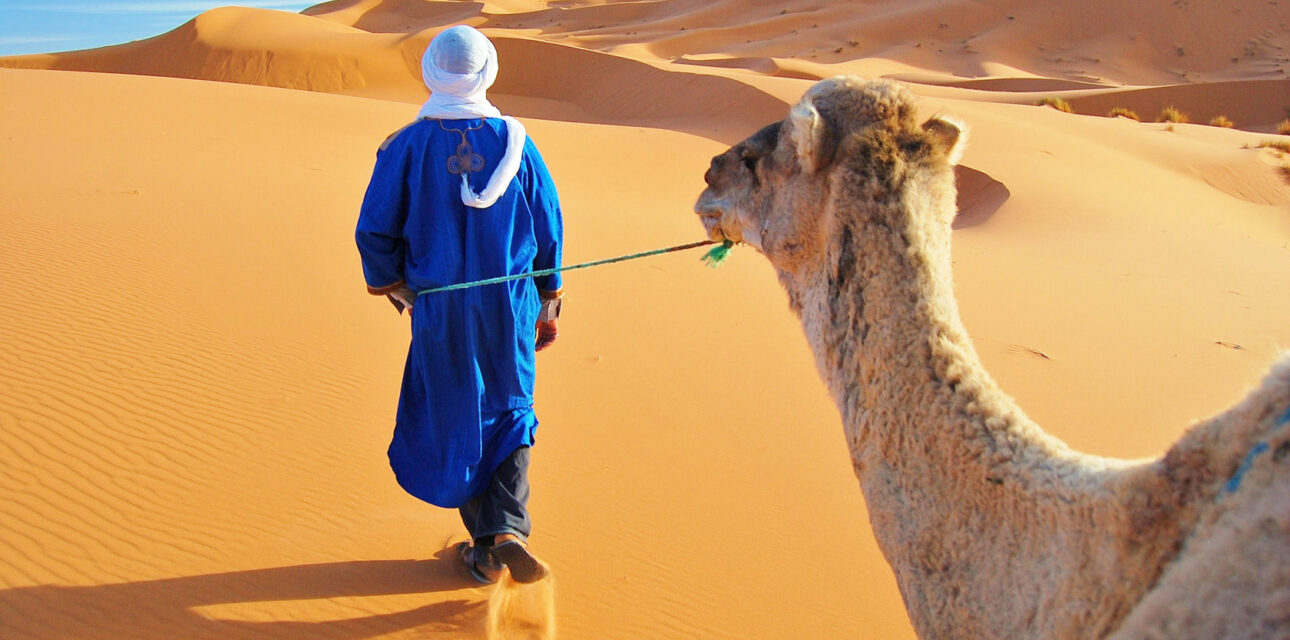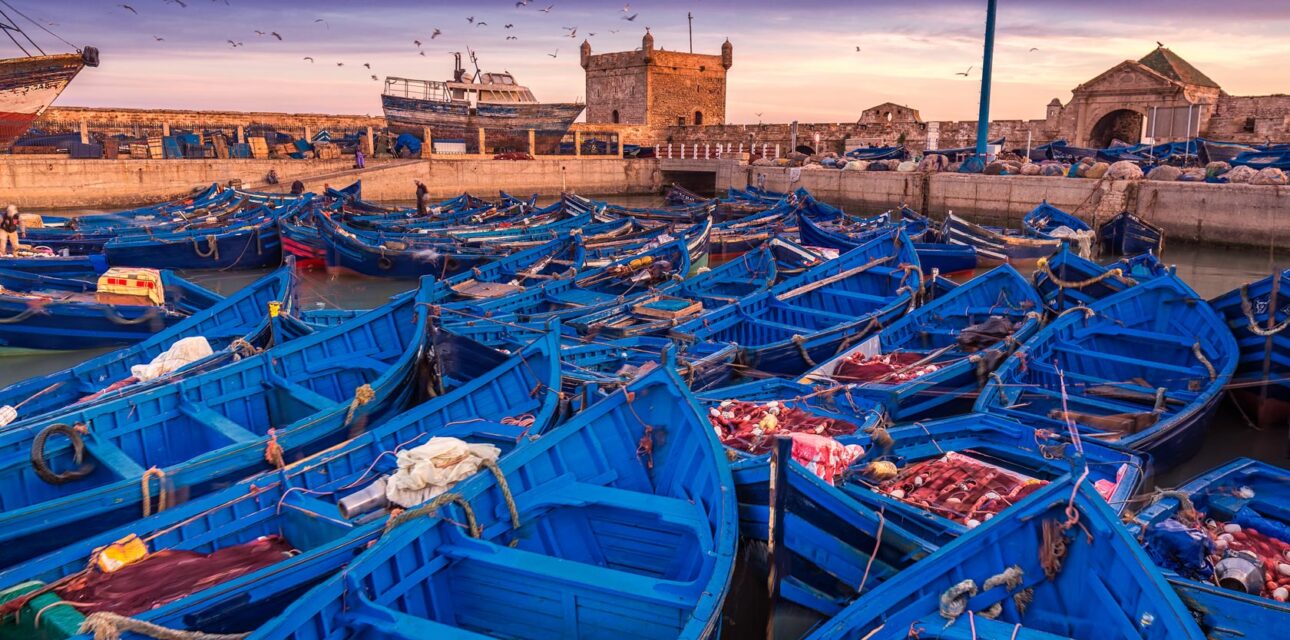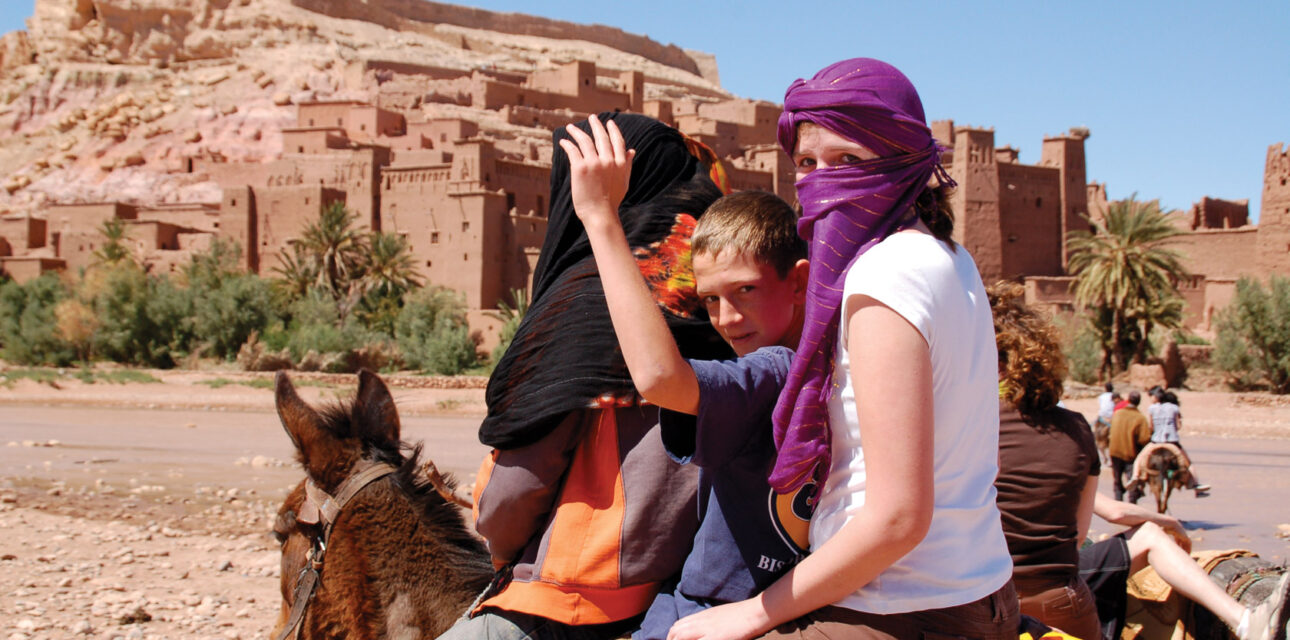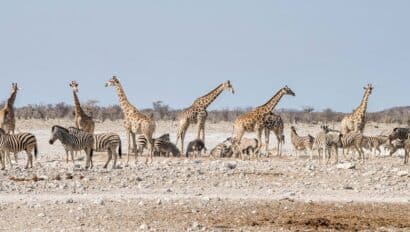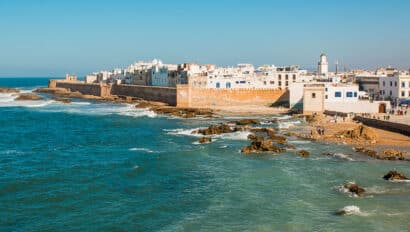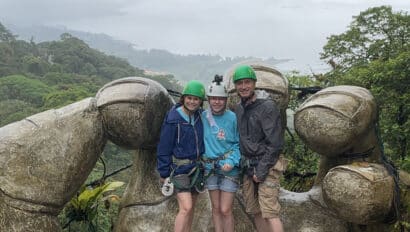Morocco Walking Tours
Morocco Tours
Imagine a day like this: You climb onto a camel, sway into a Moroccan desert to watch the sun set, and then settle into a Berber encampment to eat and dance around the campfire before nodding off in a luxury tent. Anywhere but Morocco, that would be hard to beat.
On our family departures, unforgettably exotic experiences fill every day. You’ll walk (or bike if you prefer) in lush oases full of date palms and fields. You’ll meet shepherd families and squeeze past donkey carts as you explore the Medieval medinas. In Marrakesh, you’ll haggle your way through the souks and see snake charmers and have dinner in one of the city’s finest private mansions.
All along the way, you’ll stay in lovely hotels, each one with a swimming pool. And the best surprise of all is the warmth with which the Moroccans welcome you and make you feel comfortable and well cared for in this gorgeous exotic land.
And don’t forget, you can always ask us to help extend your time in Morocco along the coast in Essaouira, in the blue city of Chefchaouen, or in bustling Casablanca.
Morocco Your Way
Take over any of our tours as your own, or have us craft a custom trip to Morocco, completely around your dreams. Start planning your private tour now.
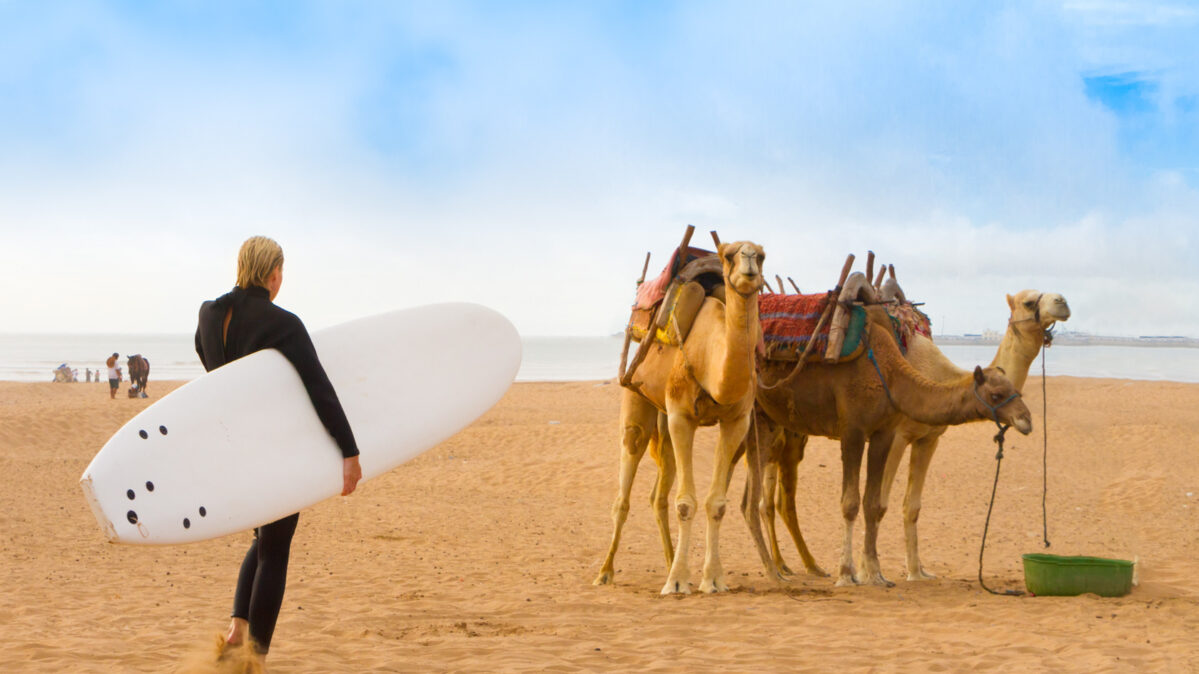
Frequently Asked Questions
Getting Here
How long is the flight to Morocco?
Flight time to Morocco from USA:
The flight time to Morocco from New York is 8 hours.
The flight time to Morocco from Los Angeles is 13 hours.
Flight time to Morocco from Canada:
The flight time to Morocco from Toronto is 8.5 hours.
The flight time to Morocco from Vancouver is 12 hours.
Which airlines fly to Morocco?
American, Delta, Air France, Air Canada, Iberia
What is the currency in Morocco?
Morocco’s legal tender is the dirham. Euros are also widely accepted as payment.
The Moroccan dirham is a closed currency and not available outside of Morocco. Bring US dollars and bank cards with you, then exchange once you arrive at a bureau de change in the airports, banks and most hotels. We suggest holding onto any receipts so that you can exchange any leftover dirhams back at the airport when you leave.
What is the language in Morocco?
Arabic and French are the main languages spoken in Morocco. Your Classic Journeys local guide is fluent in these as well as English.
Activities & Adventures
What are the top activities in Morocco?
Morocco’s best activities include:
- Camel ride across desert dunes
- Tagine cooking class
- Exploring the markets and souks
- Sandboarding in the desert
- Paddleboarding in Essaouira
- Walking around historic Fes
- Visiting cinematic Ouarzazate
- Bike rides through palm oases
When you visit Morocco with Classic Journeys, these activities (and many more) are incorporated in our tours.
What are the best things to do in Morocco?
The best things to do in Morocco include:
- Camel rides in the Agafay and Sahara deserts
- Go glamping in the desert
- Shop in the Marrakesh markets
- Walking around the ancient Fes medina
- See the kasbahs in ‘Moroccan Hollywood’, Ouarzazate
- Wine tasting in Val d’Argan
- Explore the Yves Saint Laurent Majorelle gardens
- Stargazing at a luxury desert encampment
Read our itineraries to find out how these must-do activities and more are incorporated into our tours!
What are the top things to see in Morocco?
- Marrakesh Djeema el-Fna square
- Bahia Palace
- Marrakesh Jewish quarter
- Koutoubia mosque
- Yves Saint Laurent Majorelle gardens
- UNESCO-protected Fes medina
- Fes ceramic district
- Kasbahs in Ouarzazate
- Val d’Argan for wine and argan oil producers
- Essaouira (Astaphor in Game of Thrones)
Morocco
Where should I visit in Morocco?
If you’re wondering which city to visit in Morocco, Classic Journeys tours cover the best:
Fes – the country’s second largest city, with a UNESCO World Heritage Site medina where you’ll find the oldest university in the world.
Marrakesh – captivating markets, maze-like alleyways, spectacular palaces and gardens
Essaouira – (AKA Astaphor for Game of Thrones fans) a beautiful coastal city with wind-swept bays, ancient souks, a colorful harbor, and winding pathways.
Merzouga – a tiny walkable town surrounded by the soft sands of the Sahara.
Ouarzazate – A Hollywood favorite (from Lawrence of Arabia to Gladiator), for its cinematic features: mud houses, fortified villages, and ancient Berber kasbahs surrounded by mountains and desert.
Casablanca – Morocco’s biggest city, dating back to the seventh century and merging modern architecture with French-colonial and traditional Moroccan styles.
Where should I stay in Morocco?
You can count on Classic Journeys to pick Morocco’s finest hotels for your tour, from boutique spa hotels to historic palace hotels and luxury desert encampments with facilities to rival a five-star hotel. With our invisible check in service, you can seamlessly arrive, settle in and enjoy the Moroccan hospitality.
Are meals included in Classic Journeys Morocco tours?
Yes, most meals you’ll enjoy in Morocco are included with your trip. Occasionally, you will have an evening free to try a local restaurant of your choosing. Please see our Morocco itineraries for which meals are included on which days.
What is the best way to see Morocco?
Our escorted Morocco tours with local guides give you the ultimate, totally immersive experience of Morocco. You’ll step seamlessly through the labyrinthine Medinas, lunch with local families, learn how to barter in the souks, make a traditional tagine, and more. Classic Journeys take care of reserving rooms in the best Moroccan hotels, and transporting you comfortably along the way, so that you can focus on your trip of a lifetime.
How can I experience Morocco like a local?
With a Classic Journeys local guide. You’ll see all the must-see sights, as well as being immersed into the local culture and customs—from lunches with local families to dinners with Berber tribes, all who welcome you as one of them.
Morocco honeymoon: is Morocco good for honeymoons?
Yes! Morocco has the perfect combination of romance and adventure. Ride camels together into the sunset, stay in a luxury desert camp, wander the winding alleyways of the medinas, and stay in some of the best hotels in the world.
Morocco weddings: can I get married in Morocco?
Yes! A Classic Journeys wedding in Morocco can include all the once-in-a-lifetime experiences, plus an unforgettable ceremony in a luxury desert encampment, decadent villa, hotel or palace.
Walking in Morocco: where are the best places to visit?
Our Culture & Walking tours take you between the best cities, villages and landscapes to explore by foot, from the coast, to the desert, to the ancient medinas.
The best places for walking in Morocco include:
- Marrakesh & Fes medinas
- Sahara & Agafay deserts
- The coastal cities of Essaouira and Cassablanca
- The small towns of Ouarzazate and Merzouga
What wildlife is there in Morocco?
Animals you might see in Morocco include:
- Tree-climbing goats
- Camels
- Dorcas and Cuvier’s gazelle (the smallest gazelle in the world)
- Fennec Fox (the smallest fox in the world)
- Berber skink (AKA the sand fish)
- Desert hedgehogs (the smallest hedgehog in the world)
Wildlife you might see around the Moroccan coast include:
- Bottlenose, common and striped dolphins
- Porpoises
- The endangered Mediterranean monk seal
What bird watching is there in Morocco?
Morocco is one of the best birding destinations in North Africa, with nearly 500 species on record. The best time of year for bird watching in Morocco is springtime (March – May).
- Birds around the Moroccan coast:
- White-eyed gulls
- Moroccan cormorants
- Sandwich terns
- Bald ibis
- Eleonora’s falcon
- Herons
- Black-winged stilt
- Sandpiper
- Flamingos
Birds around the Moroccan desert:
- Desert warbler
- Desert sparrow
- Desert lark
- Brown-necked raven
- Sandgrouse
- Moussier’s redstart
- Pharoah eagle owl
Is Morocco good for children and young adults?
Morocco is amazing for young children and adults, offering adventures from camel rides and sand surfing, attractions from palaces to Hollywood filming locations, and unforgettable experiences like bartering in the souks, and stargazing with Berber tribes. Our guides know how to capture the interest of children, teenagers and young adults, whatever their age and interest.
Is Morocco safe for women traveling solo?
When you travel solo with Classic Journeys, you are never alone—you are in the company of your Moroccan guide and fellow travelers, with a ready planned itinerary for each day of your trip. So you can feel perfectly safe to enjoy and explore the amazing cities, desert and more.
What should I wear for a Morocco trip?
For women, lightweight clothing that covers your shoulders and knees is perfect (think loose pants, maxi skirt, tunic or kaftan dress). A pashmina can be handy (you’ll find beautiful scarves in the markets) to cover your shoulders, and your head if you want to visit a mosque.
For men, pants or long shorts and a shirt is the usual dress code.
Comfortable shoes are ideal for walking around the cities, and it’s worth packing a hat to keep off the sun.
What is the best time to visit Morocco?
Morocco is a year-round destination, with spring (March-June) and fall (September-November) considered the best months to visit due to their milder weather and less crowds. The hottest month in Morocco is July, with temperatures around 80-85F. January is the coldest month in Morocco, with temperatures around 55F. Spring and fall are the best times of year for Morocco weather.
What is the food like in Morocco?
Moroccan food is a delicious mix of fruits and spices. Tagine is a must-try, a slow cooked stew of meats, spices and dried fruits. The most popular sides are cous cous and bread. Fragrant pastries—both savory and sweet—can be found from restaurants and street vendors. Kefta (like a meatball or kebab) is a popular street food and appetizer. Look out for harira soup in the winter, and salads in the summer. If you’re visiting the coast, Morocco is the world’s main exporter of sardines, and they’re delicious baked or fried with the country’s signature chermoula spices. Vegetarians in Morocco will find plenty of options.
